I have used several Nikon D90 cameras at various times. In whatever conditions they were not: I constantly carried cameras with me in hikes, reinstalled lenses millions of times, in the rain, in the cold and on hot days - but the cameras worked like clockwork. Of course, I understand that good copies of Nikon D90 may have come across, but still, many years of trouble-free operation and mileage of over 130.000 (one hundred thirty thousand) of one copy and over 250.000 (a quarter of a million) of the second copy only gives rise to positive reviews.
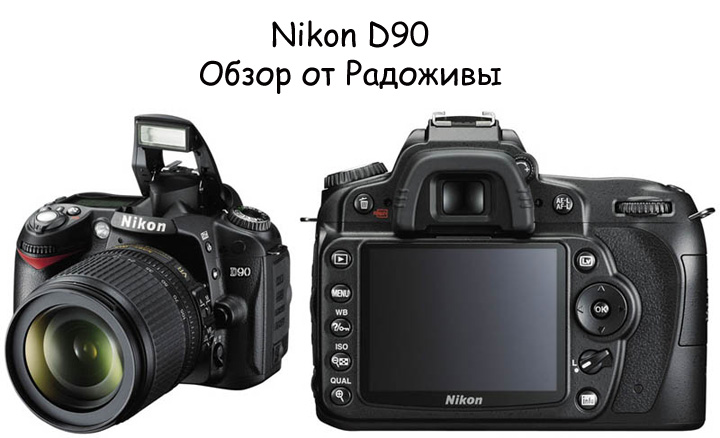
Review of the Nikon D90. View of the camera itself.
To fully understand and understand the camera, you just need read the instructionsIt’s long and boring, but I don’t see another way. The quality of the pictures very much depends on the lens and the methodology of your shooting, as well as image control mode, therefore, to say that the camera shoots better or worse is blasphemy, we can only talk about its ergonomics, technical characteristics and direct work experience. Always remember that important how to take pictures, but not by what means.
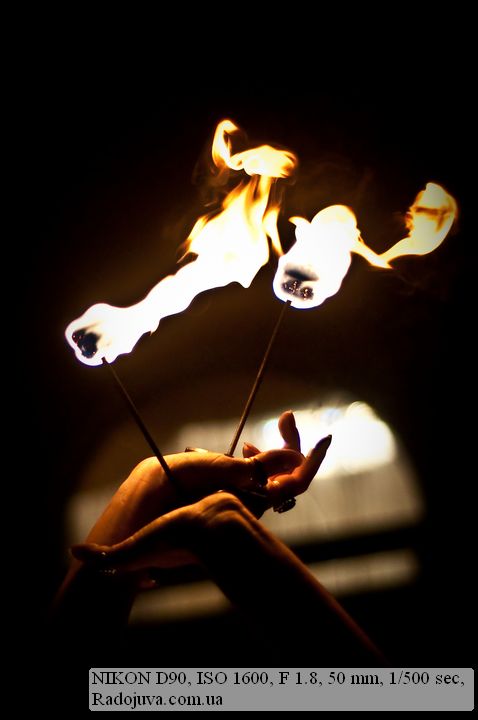
Sample photos on Nikon D90
And so, the camera belongs to the class of digital mirrors mid-range cameras... The Nikon D90 is often said to be an advanced amateur camera. Therefore, please note that this is not a professional camera, as they often write on the Internet (especially in online stores), professional cameras - is D300(s) D200, D700, D3(x, s), D4, D800(E) - therefore, you need to understand that the device is more aimed at amateurs than at professionals. The main feature of the camera is that the set of functions allows you to use the Nikon D90 just as well as professional technology, but with some limitations.
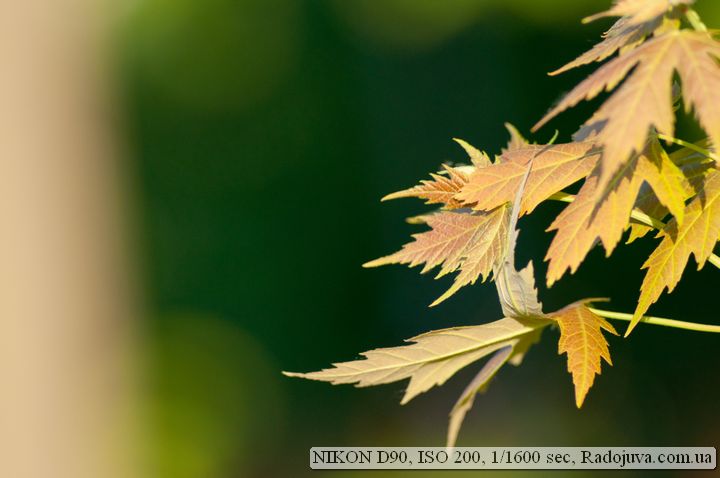
Sample photo on Nikon D90
The main parameters of Nikon D90, which are worth paying attention to
1. Live view
2. HD video 1280 * 720 24k \ s
3MP CMOS sensor
4. Aluminum-magnesium case with a bunch of buttons
5. Built-in autofocus drive
6. Additional screen
7. 4.5 frames \ second
8. Flash operating in Comand mode and FP mode
9. Lithium-ion battery
10. Matrix cleaning system
11. Bracketing exposure
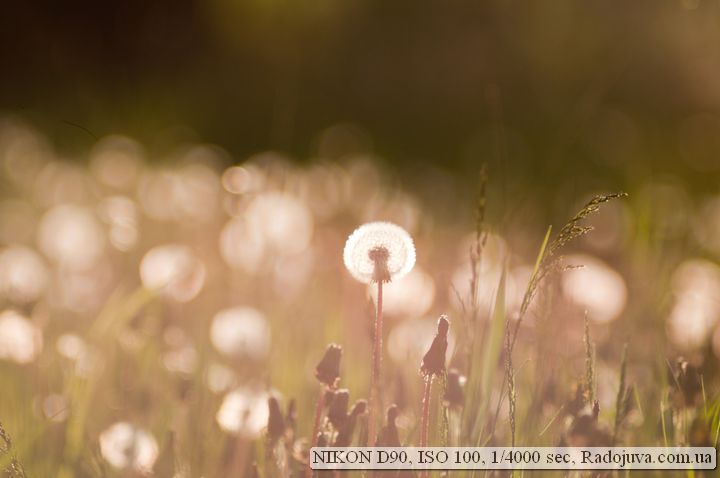
Example photo on Nikon D90
Now let's go through each item from a practical point of view.
1. Live View. Under live view it means “Live View” and in Nikon D90 it is quite a strong point.
First: made for the D90 very large screen (920.000 points - the same as in professional D3, D700) from which you can not tear yourself away. He even knows how to show slide shows to music!
Secondly: very convenient button to switch to live view - just clicked and the incomprehensible digital SLR turned into an ordinary soap box (useful for people who just switched to SLR cameras and just can't figure out what to see through the viewfinder).
Third: this mode allows clearly control focus at any point in your frame. Let’s take a closer look - when sighting you can select any area in the frame with the joystick and zoom it in on a scale of 1 to 1 - that is, select any point for focusing. This mode is indispensable when working with manual (non-autofocus lenses) and a tripod.
True, it takes time to get used to the work of the mirror, which adds unnecessary sounds and clinks when working. The mirror and shutter clicks when Live View is enabled, and when shooting, they click twice. It may seem that the camera is taking extra frames. A huge disadvantage of this mode is that autofocus works very, very slowly, and in video mode it does not work at all.
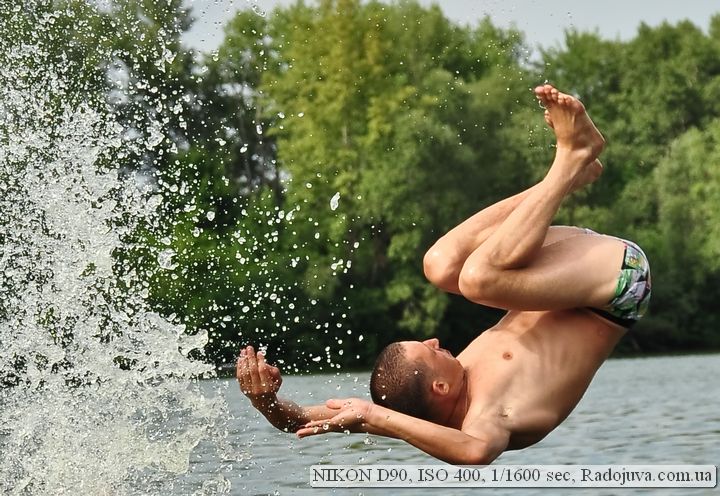
Photo on Nikon D90
2.HD video 1280 * 720 24k \ s without autofocus - absolutely unnecessary thing for a photographer
Why not necessary - because who will watch the video without autofocus? Okay, you can still take photos somehow in manual focus mode, but video with manual focus, when the scene changes at the speed of light, is a very difficult task. I recommend shooting video only with a tripod. A couple of times I shot a video with my hands - you can shoot, but again, it's very, very difficult. One more camera - Nikon D5000 - has video without autofocus.
The video itself is quite solid, in Motion JPEG format - which means that it “weighs” a lot. I advise you to immediately distill it into any of the popular formats after shooting - save a lot of disk space. Also, I advise you to block the exposure when shooting a video so that there are no tonal differences when changing the composition in the frame. Another serious problem with video is limiting the duration of the clip in 1280*720 up to 5 minutes. On the one hand, 5 minutes is quite enough to create short video selections, but I had to film my friend's performance once, and the 5 minute limit made the process very difficult. Also, after several 5-minute clips, the camera starts shooting clips up to 30 seconds long and turns off automatically, most likely due to the sensor overheating. The Nikon D90 is the first camera from Nikon with the ability to shoot video, so you shouldn't ask more of it. If you need a Nikon camera that shoots videos well and has automatic focus, then I advise you to look at the model Nikon D3100, Nikon D5100 и Nikon D7000.
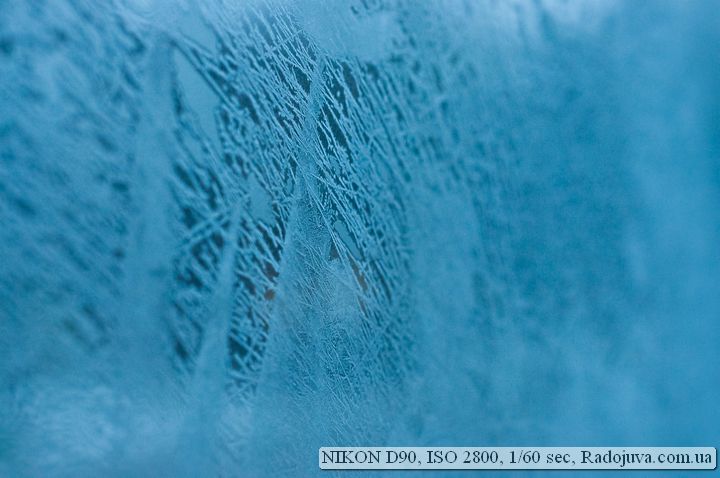
Photo on the Nikon D90. At high ISO.
3MP CMOS - just right
Why more? The more pixels - the higher the density and there may be more noise, due to the fact that the matrix cell is smaller and smaller - which means that it can catch less light. I advise you to read my article Battle of Megapixels.
The matrix is excellent. Of course, I already see noise at ISO 400, but at ISO 1600 they are still quite tolerant.
A very important point I noticed when working at high ISO, that the noise increases sharply after ISO 2500, that is, at ISO 2500 you can still squeeze something out, but then the quality of the photo drops dramatically. I recommend shooting at the proven ISO 200 and not raising ISO above 1600. ISO LO-1 (100) should be enabled only on a bright day, when you need to get some kind of portrait with an open aperture in order to keep within the shutter speed of 1 / 4000s. The values of ISO Hi1, Hi0.3, Hi0.7 are a kind of software wrapping of ISO, at such values it is practically impossible to get a low-noise picture.
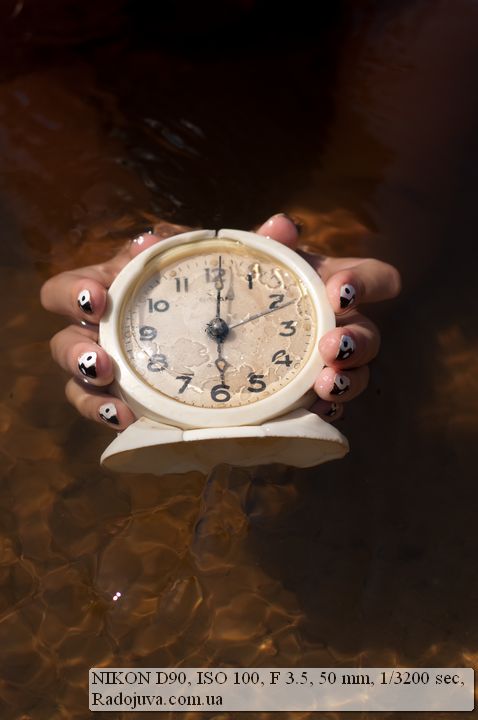
Sample photo on Nikon D90
4. Aluminum-magnesium housing (part)
In the introduction, I wrote that I constantly use, drag, ride with this camera and it feels quite adequately. Aluminum-magnesium alloy (although I did not find such information on the manufacturer’s website, but by weight, it’s not plastic) and one rubber insert, make the camera very practical, well-knocked down and provide excellent weight balance with different lenses. Perhaps for little hands it will be a little bit wrong, but for the serious hand of the photographer it’s just lovely.
On the body is a whole bunch of buttons. In the camera - the more the better. You can get quick access to all the basic functions and not scroll through the huge menu. I configured the programmable button to change the type of focus.
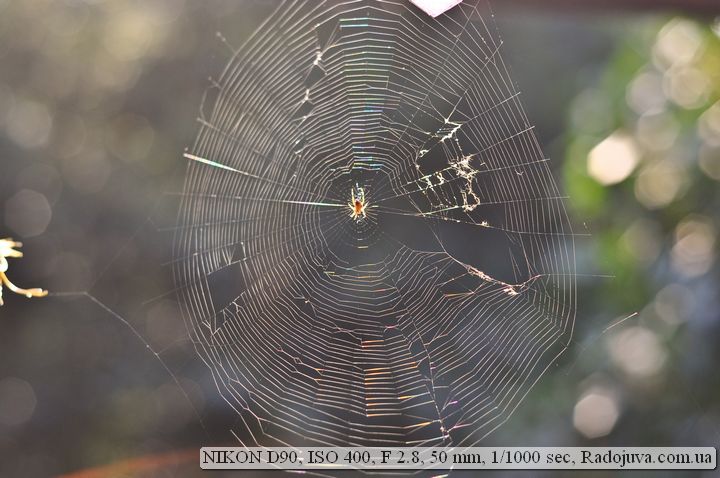
Wildlife Photo on Nikon D90
5. Built-in autofocus drive
A panacea for saving money and a panacea for professionals. The Nikon D90 camera has a built-in auto focus motor (screwdriver) for working with lenses marked AF. This allows you to use optics without a built-in focusing system (which means that you can use any autofocus lenses). Usually such optics are cheaper, for example, you can buy Nikon 50mm F1.8D AF for only $ 150 and feel like a real professional. Also, a huge portion of professional optics simply go without an auto focus motor. For example, there is simply no analogue for the Nikkor 135 DC with a built-in autofocus motor. More details about the compatibility of Nikon lenses in my article - Lens difference.
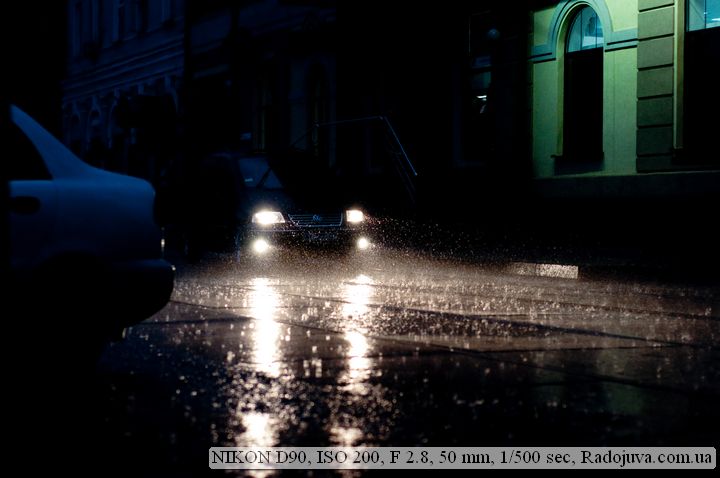
Photo on Nikon D90
6. Optional monochronous screen.
Recently I read on the Internet that the small monochrome display on the D90 is archaism, I was very surprised by this. In fact, it is not, the additional display is very good ergonomics and saves time, battery power, unnecessary movements. Let me explain - the display is always on top and you do not need to turn the camera upside down to look at the main display, secondly, it has a very high contrast in the sun (everything is visible), thirdly, it does not consume the battery (even the backlight mode of the additional screen uses a lot less charge than the main display). In general, the camera looks even more impressive with him. By the way - the backlight mode is turned on by turning the camera switch to the right. He himself then returns to its original position. Below is one of the most serious disadvantages associated with this lever.
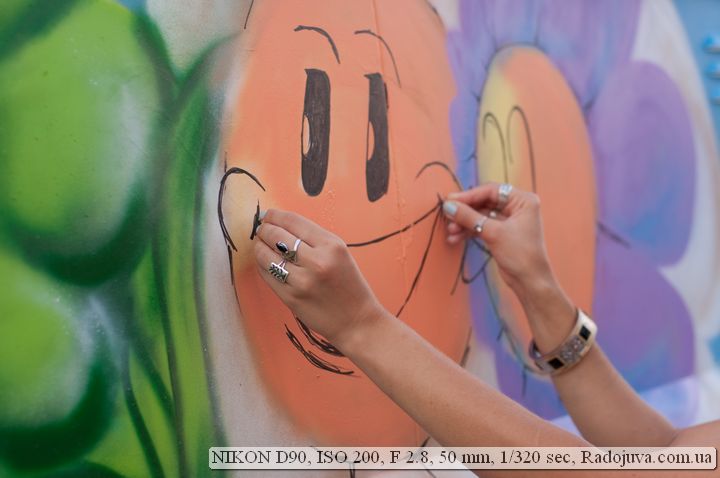
Photo on Nikon D90
7 - 4.5 frames / second
Someone can say, they say, stamps from Kenon are shot at 10 frames per second, the same D3 shoots 8 frames per second, but what can I say, D300 with a battery pack squeezes 8 frames per second. And now the question is - why do you need it? Burst shooting is very rare. 3 frames per second is already quite enough, the rest is only for specific tasks. Therefore, almost 5 frames per second is a pretty strong point. Conduct an experiment - at what speed can you press the camera button in the frame shooting mode? The same 5 times plus or minus will come out. In any case, the Nikon D90 has a higher rate of fire than the new, very expensive professional Nikon D800which can shoot at speeds up to 4 fps.
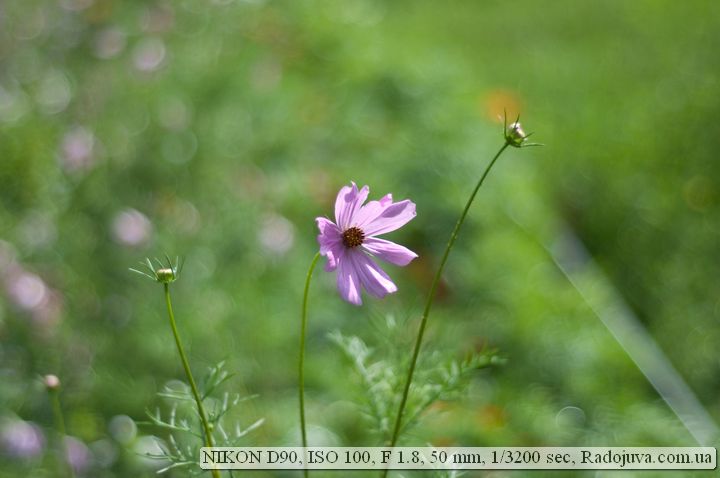
Sample photo on Nikon D90
8. Comand mode flash and FP support
Classics from Nikon. No need to buy expensive flash units or synchronizers - just go to the bracketing \ flash menu and select flash control mode C. Set the channel and group and control external flash units, such as SB-600, SB-700, SB-900, SB-800 и SB-910. Also do not forget that you can configure the built-in flash so that it gives only commands and does not take part in the shooting itself.
Then the most interesting - quick sync mode... With external flashes, you can set any shutter speed, up to 1/4000. Those who have not encountered such a problem will not understand; who knows, they will be glad. Few cameras support this mode. Why you need this, you can find, for example, in my article - 'flash in the afternoon '.
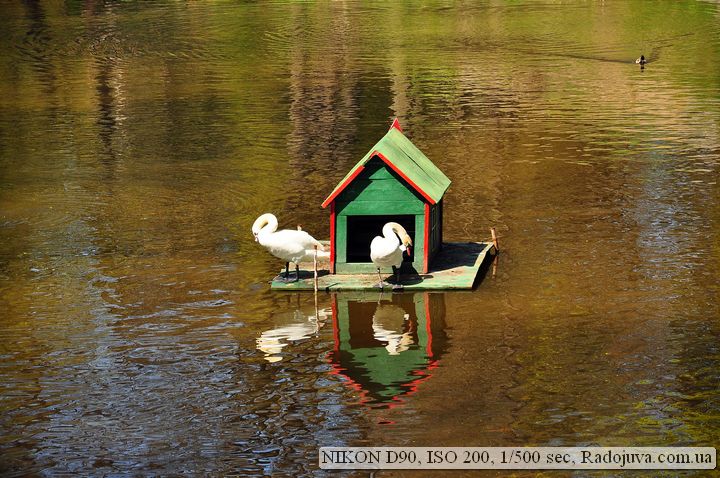
Sample photo on Nikon D90
9. Rechargeable Li-ion Battery EN-EL3e
Great armor-piercing battery. Also suitable for D700, D200, D300(s) etc. Withstands flash without over 2000 frames. The instructions say that it can provide work for 1200 shots, a third made with the flash - somewhere it is. The number of shots is greatly affected by the type of lens (e.g. VR mode), delay modes of the main display, etc.
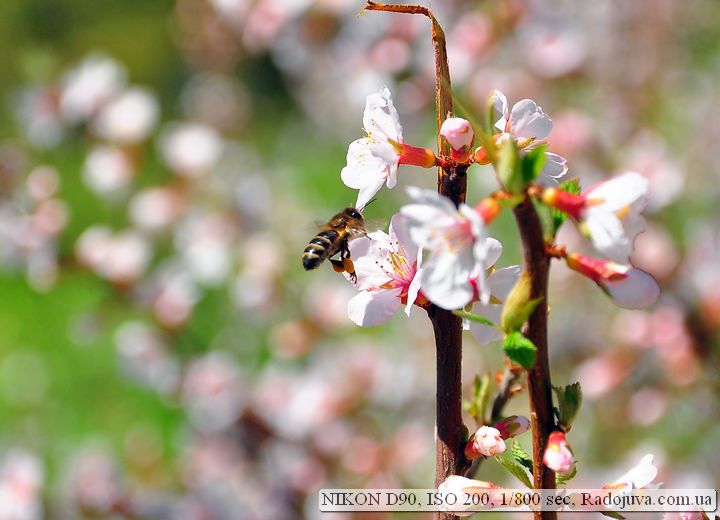
Sample photo on Nikon D90
10. Matrix cleaning system
A very useful thing. I recommend setting the cleaning when you turn off the camera, because when you turn it on, you often need to take pictures right away, and when you turn it off, let it clean for yourself. I advise you about cleaning the matrix read here.
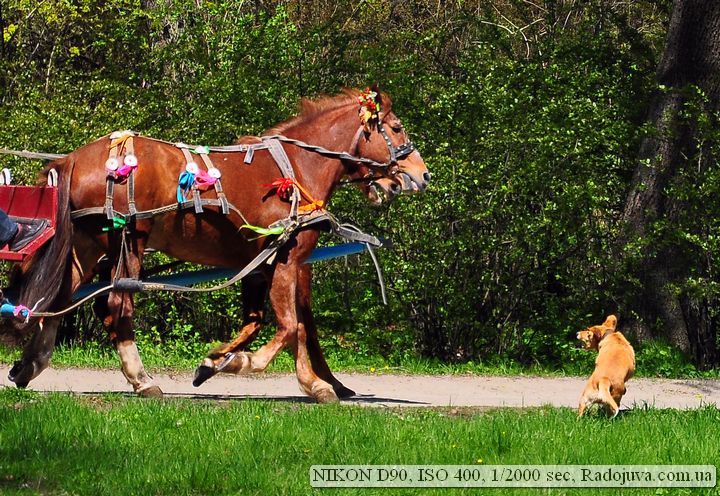
Sample photo on Nikon D90
11. Bracketing exposure
Bracketing allows you to shoot without fear for the correct exposure. True, this requires additional time, battery wear and fast filling of the memory card. It is under bracketing 4.5 frames per second are useful. I recommend not much use bracketing, it’s better to adjust the camera (especially the amendment exposure) and make one frame in RAW, and then, if anything, hold it out programmatically rather than slam the shutter on expo.
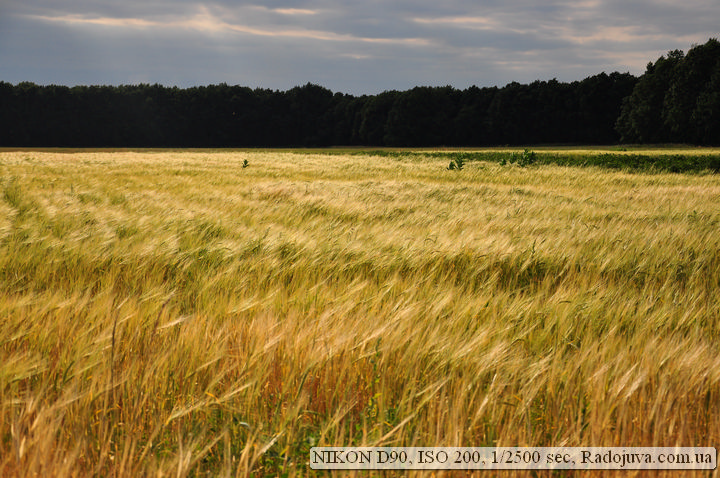
Nature photo on Nikon D90
I would like to note a number of huge advantages: wA wide range of functions to improve the picture - noise reduction functions, D-lighting etc.
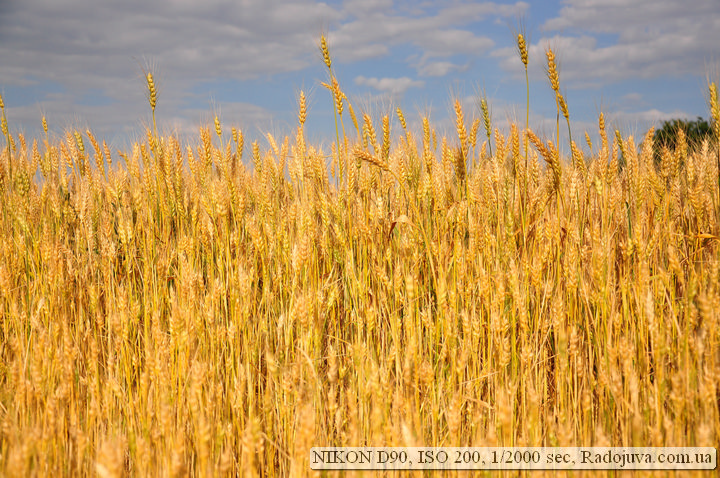
Nikon D90 photo
The disadvantages of the Nikon D90:
The strongest minus when working with the camera, I consider a strong return of the shutdown lever - that is, when you turn on the backlight of the additional screen, the lever moves back to the “ON” position, but its inertia is very strong and it goes further and turns off the camera (to the “OFF” position), therefore, you need to smoothly remove your finger after turning on the backlight of the additional screen. Very unpleasant stories are associated with this glitch, when at night, at important moments, the camera simply went out after setting the settings on the external display. Also, this switch is pretty loose, but it still works stably.
Also, after active work for a year, the rubber band, which is located to the right of the display, fell off, it expanded slightly and peeled off. I noticed that the rubber band covers the activity indicator of the memory card, that is, there is a fear of pushing the indicator deep into the camera and damaging it. The disease was treated by cutting off excess rubber and superglue. D90 got this disease from D200 and from D80. But, of course, I use my D90 camera a lot.
Exposure in 1/4000 second - if you haven’t understood yet, then when shooting with fast lenses starting with aperture of F / 1.8 and lower, you will miss the shutter speed, even at the lowest ISO.
Metering (exposure meter) does not work with non-chip lenses. It would be nothing, but this is just the camera and inferior to professional ones, such as D200 and older, almost any lens can be attached to them and the camera will operate in semi-automatic aperture priority mode or in good old manual mode. This really limits the operation of the camera with completely manual (without processor contacts) lenses, for example, Soviet ones - and you have to completely set all the settings “by eye”. Personally, I would very much like this function, since I am a fan of photographing with Soviet (and post-Soviet) optics.
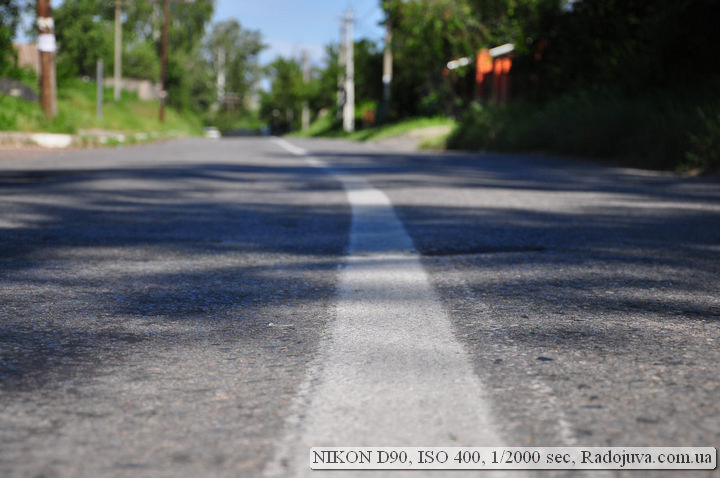
Photo on Nikon D90
For 3d tracking focus, there are not enough points (focus areas), and indeed, not enough focus points for such a solid camera.
No one wants depth of field view button imaged space. I use it very rarely, for example, in macro photography, but usually in 99% it is not needed. A funny thing that I advise you to check is to raise the flash and press the depth of field button (it’s located below, under the lens mount) and you will see that for a couple of seconds the flash works as a flashlight (using the strobe effect)
I consider one more unnecessary button \ property focus point lock button. It was useful to me only a couple of times, when I very strongly brought the camera to my face and accidentally pressed the joystick, thereby changing the focus point, in other cases, the point retains its position. It would be better instead of it to set the lever for changing the metering (as in older models), and so you have to press the top button near the external display and turn one of the selectors.
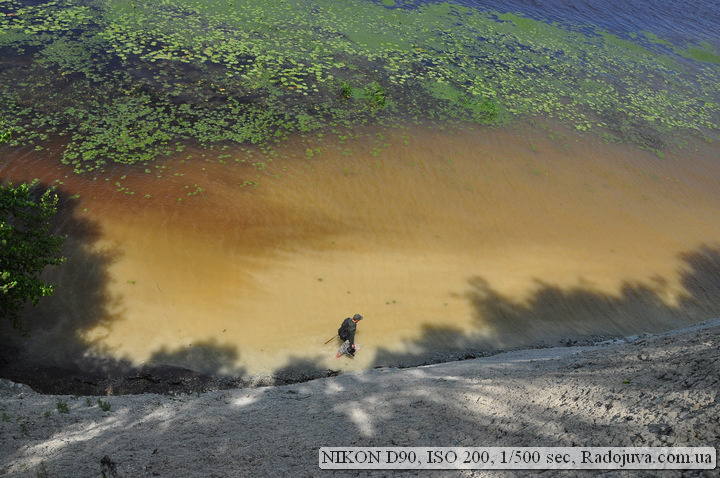
Photo at Nikon D90
Brief comparison with Nikon D80:
D90 is a descendant Nikon D80, which has an increased rate of fire, a different type of sensor (CMOS VS CCD), a central multi selector button is added, there is a Live View function and the ability to record video, and the display is also enlarged. Battery, menu navigation, ergonomics and other important functions remained the same. If you Nikon D80 I do not recommend upgrading the Nikon D90, as the main functions of the cameras are the same.
A brief comparison of Nikon 90 with D300, D300s:
D300, D300s Are professional cameras from Nikon, and the amateur D90 cannot compete with them. IN D300, D300s stronger body excerpt up to 1/8000, a professional camera control interface, high rate of fire and the ability to work with manual lenses, this is where the main differences end. I do not recommend overpaying for D300, D300s unless you have to shoot 1000 frames every day.
A brief comparison of Nikon 90 with D7000:
D7000 surpasses even the Nikon D300 in a number of parameters, D300s, and especially Nikon D90, because as an upgrade I recommend only Nikon D7000 or already ff Nikon D700, D600, D800.

Photo at Nikon D90
Fit in the Nikon D90 Camera I think control with infrared remote Nikon ML-L3It costs a penny, and gives a lot of opportunities.
Attention: The final result of the image in the photograph depends very much on a large number of factors and the camera does not play the first role in this quantity, therefore, when photographing, remember - important how to take pictures, and don't try hard to find the best camera.
Sample Photos
The photos in the gallery below were shot on a budget lens Yongnuo 35mm f / 2 (model YN35mm F2N for Nikon cameras) and shown without treatment. Part of the photos is the conversion of the source RAW files by the original Nikon ViewNX-i utility without any additional adjustments, the other part is the original on-camera JPEG.
Download source files in format JPEG can at this link (114 files in the '.JPG' format, 735 MB).
More examples of photos, as well as source files, can be found in the reviews:
- YONGNUO LENS YN50mm F1.4N E
- Nikon DX AF-S Nikkor 18-55mm 1: 3.5-5.6GII ED SWM Aspherical
- Nikon N AF-S Nikkor 58mm 1: 1.4G Nano Crystal Coat SWM Aspherical
- YONGNUO 50mm 1: 1.8 (YN50mm F1.8N)
- Tokina VCM-S AT-X PRO SD 70-200 F4 (IF) FX N / AIS
- Nikon AF Nikkor 28mm 1: 2.8 (MKI)
- Tokina AT-X 80-400mm 1: 4.5-5.6 (AT-X 840 AF-II)
- Nikon AF Nikkor 20mm 1: 2.8D
- Tamron PZD Di 28-300mm F / 3.5-6.3 Piezo Drive VC Model A010
- Nikon Zoom-NIKKOR 80-200mm 1: 4.5 (AI, MKII)
- SIGMA ZOOM 28-105mm D 1: 2.8-4 DG
- Nikon AF Nikkor 28-70mm 1: 3.5-4.5 (MKI)
- Sigma 135-400mm 1: 4.5-5.6 D APO
- Tokina SD 24-70 F2.8 (IF) FX AT-X PRO Aspherical
- Nikon AF Micro Nikkor 105mm 1: 2.8 (MKI)
- Tamron 16-300mm F / 3.5-6.3 Di II PZD VC Model B016
- Tokina 107 Fisheye 10-17mm F3.5-4.5 DX AT-X Internal Focus
- INDUSTRAR 22U-1 1: 3,5 F = 50mm P
- LOMO RO501-1 F = 100 1: 2
- Nikon ED AF Nikkor 80-200mm 1: 2.8 (MKI)
- LOMO RO500-1 F = 90 1: 2
- Tokina AT-X PRO AF 28-70mm 1: 2.6-2.8 (Tokina AT-X 270 AF PRO)
- Nikon Lens Series E Zoom 75-150mm 1: 3.5 (MKII)
- Sigma DC 17-70mm 1: 2.8-4.5 MACRO HSM
- Tokina AT-X PRO SD 11-20 F2.8 (IF) DX ASPHERICAL
- SIGMA ZOOM 55-200mm 1: 4-5.6 DC HSM
- TAIR-3 4,5 / 300A
- Nikon DX AF-S Nikkor 55-200mm 1: 4-5.6GII ED VR II
- QUANTARAY TECH-10 NF AF MULTI-COATED 1: 4-5.6 f = 75-300mm
- Nikon NIKKOR-SC Auto 1: 1.2 f = 55mm
- Sigma DC 18-50mm 1: 2.8 EX MACRO HSM
- Tamron AF Aspherical 28-80mm 1: 3.5-5.6 177D
- Quantaray 70-300mm 1: 4-5.6 D LDO MACRO for Nikon AF, MACRO (200-300)
- SIGMA ZOOM 28-200mmD 1: 3.8-5.6 UC Aspherical
- Quantaray 70-300mm 1: 4-5.6 D LDO MACRO for Nikon AF
- MC PANCOLAR 1,8 / 50 CARL ZEISS JENA DDR
- YONGNUO 40mm 1: 2.8 (YN40mm F2.8N)
- Sigma 70-300mm D 1: 4-5.6 APO DG
- TOKINA AF 70-210 1: 4-5.6
- Sigma 70-300mm 1: 4-5.6 D DL MACRO SUPER
- Quantaray for Nikon AF 28-300mm 1: 3.5-6.3 LDO Multi-Coated (28-300mmD Ashperical IF)
- SIGMA ZOOM 28-300mm 1: 3.5-6.3 DG MACRO
- YONGNUO LENS YN 14mm F 2.8 N
- Tamron AF Tele-Macro 70-210mm 1: 4-5.6 158DN
- I-26m-U 2,8 / 52
- Sigma Zoom DC 18-200mm 1: 3.5-6.3 II HSM OS
- Yongnuo YN 85mm F1.8N
- INDUSTRAR 22U-1 1: 3,5 F = 50mm P
- SIGMA ZOOM 18-50mm 1: 2.8 EX DC (D)
- Nikon IX-NIKKOR 60-180mm 1: 4-5.6
- YONGNUO LENS 100mm 1: 2 (YN100mm F2N, for Nikon)
- PROMASTER DIGITAL XR EDO AF Aspherical LD (IF) 18-200mm 1: 3.5-6.3 Macro
- Tamron Di II SP 17-50mm F / 2.8 VC
- MC HELIOS-44M-4 58mm 1: 2
- YONGNUO 35mm 1: 2 (YN35mm F2N)
- Sigma DC 17-70mm 1: 2.8-4.5
- Nikon ED AF-S Nikkor 300mm 1: 4D IF Silent Wave Motor
- Yongnuo YN60mm F2NE MF MACRO
Prices for modern Nikon cameras in popular stores can look at this link.
Video review, retrospective
Comments on this post do not require registration. Anyone can leave a comment. Many different photographic equipment can be found on AliExpress.
Conclusions:
In general, the Nikon D90 camera is simply lovely, a wide range of functions will allow both professional and amateur to work. The speed of work and the quality of the picture are very pleasing.
Material prepared Arkady Shapoval. Training/Consultations | Youtube | Facebook | Instagram | Twitter | Telegram





































I went to see the prices and read the characteristics, they vary everywhere.
On the catalog there are some prices for comparison, on https://obzornov.ru/zerkalnii-fotoapparat-nikon-d90-kit already completely different. You go to the store from Obzornov and the prices there correspond normally. From the catalog - they differ in places by 1000-3000 rubles.
It turns out they do not update prices promptly. So be careful.
Good afternoon!
I want to ask for advice (your Radozhiv and the community reading this fascinating site).
I have 9 years Nikon D90.
Lenses: non-powered fifty-fifty (1.8), whale 18-105 and full-frame 70-300.
Satisfies everything except the whale lens. I just take off while traveling. I rent a lot. I shoot for myself and Google maps (for free I post some view photos as an amateur). Changing lenses and carrying a heavy bag with you is not comfortable. I realized that I need a good universal megazum.
I started looking for a universal zoom and realized that the “Nikon 18-300mm f / 3.5-6.3G ED AF-S VR DX” lens would be a bit dark for the D90.
Alternative to “Nikon 18-300mm f / 3.5-5.6G ED AF-S VR DX”, it will be heavy) And the old one.
Those. Having bought a heavy lens, I will not really gain much in weight from the fact that I will not have 70-300 full-frame with me. And I would like to carry it with me less often.
Need advice on what to choose:
1. leave the D90 + to buy a heavy Nikon 18-300mm f / 3.5-5.6G ED AF-S VR D.
2. Sell everything except the 70-300 lens, and switch to the D7200 + dark but light Nikon 18-300mm f / 3.5-6.3G ED AF-S VR DX.
How much will I benefit from replacing the D90 with the D7200? I repeat I take off for myself and google maps and everything suits everyone.
Is it worth it to strain and change the familiar D90?
Or will replacing both the carcass and the lens (7200 + light super zoom) be a leap for me as a shot?
How big will the difference be in shooting on the D90 + light super zoom and D7200 + dark super zoom?
My head is already beginning to boil a little)) I ask for help))
I can't go to full frame - the budget doesn't allow.
18-300 5.6 and 18-300 6.3 are almost the same age, you should not bother with the age difference here at all.
If you want it both easily and universally, it makes sense to take a place d90 something like d5200-d5300-5500, etc.
If you shoot in the afternoon in the open air, you will not win much from the transition from d90 to d7200.
Unexpected development) I did not even look towards the D5500.
Thank you, I will study the topic.
In the 18-300 5.6 and 18-300 6.3 lenses, it’s not the age that hovers more, but a different aperture.
D90, as I understand it, will already miss autofocus on the long end of 18-300 6.3.
Or will it not be in the air?
This will not be the day.
Thank you)
Your answers are a balm for my soul - I really don't want to part with my D90)).
In general, without being tied to the shooting conditions (sometimes I still take evening photos): on the D90, will there be a big difference between 18-300 5.6 and 18-300 6.3 on a large sample?
That is, for example, for each lens there is a certain average value of the quality of a large number of images, calculated from a sample in which 80% “street day” and 20% “street evening or night”.
Will these values be very different for the two lenses? I understand that with 18-300 5.6 the quality will probably be higher, but is it much? Maybe the difference is that she should not bother?
I apologize, if it is difficult to put it - I am a mathematician by education))))
It alone is less than a third different. Sometimes it will be difficult to catch the difference, especially if you shoot on covered apertures, such as f / 8 and below.
If you are a mathematician, then the difference in apertures 6.3 and 5.6 is the ratio of the squares of these numbers.
Well, yes, it is logical! How I missed)
6.3 and 5.6 is only relevant for focusing!
And the shooting itself will take place at a different aperture value. There will be no difference.
Thanks for the tip!
I estimated the ratio of apertures at the far end - at a maximum of 1.2656. I think such a decrease in the luminous flux can probably be neglected.
Are there any personal feelings from these two lenses?
How much better does VR work on 18-300 5.6?
My personal observations of these two lenses are still small and subjective.
"My personal observations of these two lenses are still small and subjective."
Thank you!
Breathed out with relief - old friend D90 remains with me)
Itself did not check but read, 18-300 on the long end ugly soap. Even 18-200 is also not very. I myself also wanted to buy a super zoom, then it cooled down. Maybe you should buy 10-24. For street-photo is indispensable. You will have a kit: 10-24, 70-300 and D90. Cover 100% of the tasks. You will come to purchase a D7200 in a natural way when the D90 is covered.
Thanks for the advice Arkady Shapoval and Lyokha!
I found a store where there are both lenses. And yesterday I went to choose. They gave me a tripod and the opportunity to calmly choose from two Nikon AF-S DX Nikkor 18-300mm f / 3.5-5.6G ED VR and one Nikon AF-S DX Nikkor 18-300mm f / 3.5-6.3 G ED VR.
Changed the lenses for about 40 minutes (thanks to the store, no one said a word))).
What was on my copies:
1. Handheld indoor shooting at the maximum end: all three lenses focus very quickly. I photographed the next showcase. The range is 12-15 meters. I did not notice any tangible difference between 6.3 and 5.6. The lighting was not very strong. Simple ceiling. The clarity of the pictures is about the same. The stabilizer was turned on at maximum. Perhaps it seemed from the hands that both AF-S DX Nikkor 18-300mm f / 3.5-5.6G in Active stub mode gave a slightly less clear picture. In the NORMAL mode, the pictures were the same for all three. I didn't notice the soap. The color rendition is about the same. There is some blurring (on all lenses) but it is visible at the maximum magnification of the image. Caused, I think, by the shaking of my hands)
2. Shooting indoors with 18 mm hands. Fotkal showcase without its own lighting (ceiling lighting). Focusing is instant. The clarity is the same everywhere. I did not notice a difference in color rendering. But the viewfinder with the AF-S DX Nikkor 18-300mm f / 3.5-6.3 was a bit darker.
3. Shooting from a tripod target to determine the back and front focus. Focusing is instant. The viewing angle is the same everywhere. All lenses had no focusing defects. At least I did not notice either the back or the front. At AF-S DX Nikkor 18-300mm f / 3.5-6.3 noticed chromatic aberration at 300mm. Manifested by the second outline of purple. Closer to the edge of the image, the aberrations intensified. The overall sharpness of the inscriptions was not bad, but slightly inferior to both AF-S DX Nikkor 18-300mm f / 3.5-5.6G. Perhaps these are problems of my instance.
Both AF-S DX Nikkor 18-300mm f / 3.5-5.6G at 300mm had significantly less aberration. And a little bit sharper picture in the center. I chose one that was slightly more distinct at the edges of the picture.
The conclusion on those lenses that fell into my hands: AF-S DX Nikkor 18-300mm f / 3.5-5.6G is heavier than AF-S DX Nikkor 18-300mm f / 3.5-6.3. But it gives a slightly better picture. But a little bit better) If someone weighs on principle, it is better to take the lightweight AF-S DX Nikkor 18-300mm f / 3.5-6.3. On the D90, it focuses very well on the long end and gives a good picture.
I hope my "analysis" helps someone)
Arkady, as I understand it, you are using the d90 today. How relevant is the camera in 2019, if you do not take into account work on iso above 1600? Is there a big difference with the d7000?
Dmitry, in fact, the D90 is a normal camera, I’ve been using it for 7 years and I'm not going to change it yet. The only thing that bothers me is the minimum shutter speed of 1/4000 I would like of course 1/8000 to freeze the image. On a bright sunny day, fast aperture optics with an open aperture of f 1,8 can not be invested in shutter speed 1/4000, you can fasten the filter. I would advise you to buy either d7000 or go to the full frame. The choice is yours
Good day! Please tell me how to determine the year of manufacture d90?
Not on the box, not on the operating manual, bought used on occasion
Nikon D90?
I rent morning performances in kindergartens. I have been using D90 for a long time. What can you buy today while keeping batteries? (And if you do not set the condition for batteries, then which device would you recommend today?)
D700, D300s use the same. If you grow, then d600, d610, d750
It is necessary to grow in the composition of photography (color and geometric), no "growth" in the technical component is something defining!
All right. But this does not change the fact that sometimes you can buy new equipment.
"No" growth "in the technical component is something defining!" - why? who said that? Where is that written?
Why are such dogmas incomprehensible?
What I like about modern Nikons is the batteries: D7000 / 7100/7200, D600 / 610, D800 / 810/850, D750, D500 - all use EN-EL15, or EN-EL15a.
The entire junior line - D3xxx, D5xxx use EN-EL14 or EN-EL14a batteries.
Since there are few varieties, batteries are popular, and it is easy to find a replacement or an additional battery, including a non-original one (I have two non-original ones, costing 1/3 of the original one)
D80, D90, D300, D700 also have the same battery. I agree very good. convenient, for example, for 2 cameras, three batteries, instead of 4
Good time…
Advise an inexpensive camera for a start in object photography ... thanks ...
If you need good detail, then a matrix of at least 16 megapixels is desirable: D5100 / 7000/5200/3200/7100.
A lot depends on the optics, look for a lens that suits your needs. Shooting refrigerators, for example, is also a subject :)
thanks)…
For shooting gel varnishes (a bottle about 7 cm high) I used Jupiter 37a + macro rings + D7100 + lightbox + towers. Manual mode, F11. There are enough permissions for a vertical two-meter banner (from a distance of 1.5m it looks good).
When using shorter-focus optics, strong distortions already climb, with “zoom optics” it is even worse in terms of distortion.
Added my retro video review https://www.youtube.com/watch?v=6RSeHtACLIo
"Video review, retrospective"
Good afternoon, Arkady. Pototrev
review, I thought about replacing the d3100 with the d90 because of the convenience and advanced features. Tell me, please, will there be any difference in the quality of the pictures?
Sewed on soap as for me. Of the benefits, only the focus motor. The lenses will remain the same, the skills are the same, the quality of images from this will not improve.
The autofocus system is the same, the working ones are the same. A bit more burst speed, you can grab more good points. Everything.
Because of the pentaprism, it is still more pleasant to work with the d90 at times, otherwise it is.
with d90 the quality will be a little worse
Thank you.
Slowly, slowly, I'm studying at D90. I’ve bought it for a long time and I don’t presume to master good full-frame cameras until I learned how to squeeze everything out of the old camera, it may seem naive to someone))
1) I have a newbie question - which ISO is considered unnominally working. Intuitively - with any other settings and on different lenses 1000 is already a bit too much. Although the grain can sometimes be justified by an artistic idea.
2) I agree that there is no point in overpaying for a 300-ku, now I have studied the topic - she also does not have autofocus in the video (Maybe, as an offtopic, video connoisseurs will answer with which camera the video is of a fundamentally different level, and in the daytime, in normal light, you can shoot without tripod? (video question, of course) ???
As for the volume of the video - so it will be heavy, it's fhd. By the way, if you cut it, you still unpack it, so I see no point in such dances. Usually I always unpack and edit immediately after I shoot and encode. This is the most effective way to save disk space))
For D90 iso 1000 is probably really a ceiling, or close to it. But it’s not grain, it’s digital noise, “eating up” color and detail, and which is not artistic, in my opinion.
Thank you)
I would say the ISO ceiling is 1200, and 1600 if it really 'squeezes', the above color starts to be lost, in addition to noise.
It makes noise on the basic one. But this is nonsense, because there is a central button on the joystick and you can shoot at higher ones, albeit without color.
Is the D90 noise at ISO200?
Is it like this? Have you turned the sharpness “all the way to the right”?
He was the owner of this camera and did not see noise until ISO800, although he never twisted the sharpness.
If desired, noises can be seen on the basic sensitivity. He also once suffered such garbage. Then he began to take pictures.
Don't talk about all the techniques ... And the picture looks a little dirty without 400x magnification. The possibility of cropping is extremely limited. Just a subjective. Someone dear this camera as a memory, from the poor, but for me it’s an empty space. I dropped in here just out of curiosity, how legends are filmed ...
They did not write about skinton. Is it really okay?
My camera lenses are out of order, and expensive budget does not allow, and not only the color of my skin. I do not like blue, but this is a matter of bite, I seriously think to make happy which reindeer herder ... I heard that some activists say that the noise on the base is a serious argument for abandoning the system. With which I personally disagree. And Color, once again, is a matter of taste, but with this not everything is so simple.))) I here recently decided to update the gray cards, it turned out, not a popular product, I bought it of course, but not from the first times. Photoshop, photoshop, that's the theme.
Native software Nikon received new color profiles in addition to the old ones, which I personally like, but this is equal, goodbye jpg camera, you can’t install it in the camera. Although it will be necessary to check. There is no time to do this yet. I’m sitting on the mic, shooting children in full frame, on the mirror, this must be a super pro, and I'm just dad.
Native ones cannot be established, only interpretations based on them
Everyone is making noise on the base iso. an approximation of 400% will help you see this)
Vision, such a thing ...
D90: There is ISO 1600
I'll give it more. D90, ISO2000.
Arkady and megamind!
What can you say about the theory that mazhenta and shadow cadaver on the skin are caused by ADL (which does not turn off inside the processor)? The processor reduces exposure due to it, while white balance tables remain for normal exposure. As a result, both blue and red unbalanced data are recorded in the RAF and the ZHPG, where blue is torn off at the bottom and red is pinched at the top. The product then produced a high din. range, but at the cost of losing the color picture.
How to make this bastard not jump above his head, but use that DD that allows the sensor, like a boot does? You don’t think, 90-k is one of the best devices from Nikon, but the ability to take pictures of Caucasians only with a manual BB somehow annoys :)
In RAW format, the WB value is stored only as the value to be used by the converter during development. Data from the matrix is taken as is. The same thing happens in humans. Both the matrix and the eye give three numerical values depending on the spectrum of the incident radiation - this is an objective measurable value. Then, during processing, the converter (and the brain) take these channel data into account with different “weights” so that the obviously white objects appear white.
All this is certainly great, but the rav format is not such a magic lamp of Aladdin, as photographers think of it. This array of matrix data, cococo, and other religious mantras break into an unpleasant thing: the processor uses loot to extract them from photons, which already include the shooting conditions, and the most disgusting is the processor's desire to pull an owl onto the globe, because the sensor has less tonal sensitivity. than nikon gives out. So in this data array there are already broken channels for the glory of DD, which in some cases are not straightened either by the great Belovo Balance, or by curves, because the processor broke the color model like a heating pad. Cheerful attempts on the forums to draw out test pink cheeks, at best, end in strongly minus vibrance, and more often in flat or square-hole faces.
And the question is not even how to eliminate this disgrace, but to find stable conditions under which Fotek catches glitches and planes salad, and at that moment to push clear curves into his mouth or still prune. Well, or priced. Help me!
I always have one question - if a person has such advanced knowledge about spectra and so on, what makes him shoot at d90?
Arkady, d90 - despite the miscalculations of engineers, one of the best fotik in consumer terms, and that is characteristic for the color. Nikon failed with Sonya at 7000 and Toshiba at 71, but even there they were able to make the best on the market, and from poop. That gave them the experience to make the best color in d500 / 850 for the most frostbitten marketing requirements.
Even the Samsung, with all their colorimetry experience, couldn’t fit into the white balance, although for the user they gave out a funky color (if nothing can be compared) and simply paid attention to this particular tonal zone.
Now my d90 runs at 390.000 and I already decided to sell it, a good machine, but I already ran into its capabilities as a cropped camera, especially after the same d500.
nx system
Write easier. There is no particular desire to wade through an array of hohmochek to get to the bottom of what was said.
I don’t know of any RAW LUTs. A photodiode covered with a filter responds with a certain voltage to the recorded spectrum (cut off by the filter itself). The voltage is amplified by a cascade of operational amplifiers (raise the ISO by whole steps). Then the ADC is digitized. Then it is multiplied by some factor (raise ISO by 1/3 - 1/2 - 2/3 stops, all kinds of Lo / Hi modes). We got some digital value, so for each light-sensitive element of the matrix. The white balance calculated by the camera was recorded nearby for correct development, and other shooting parameters were inserted into EXIF. That's all - RAW is ready.
Further - RAW processing either by means of the camera, or by means of the converter. Debyerizing and applying a color profile that translates an image from the color space of the camera (abstract RGB) to the target space (AdobeRGB / sRGB) through an intermediate XYZ. For fotik, there’s just a matrix with coefficients selected by the manufacturer. For the converter, most often too, but someone can rest and build a more complex matrix with piecewise curves. Perhaps this is what you call LUTs. Taking into account the recorded BB, further transformations are carried out (channels are scaled). Then begins the malicious colorophilia, not related to photography, and it is not interesting to discuss it.
Well, and you already got his hochmochki and allegory :).
I appreciate good humor, but when it is appropriate. And not like our PRESIDENT.
What to do ... Since there is no solution, you need to have fun :)
Well, look, the ADC produces 8 bits of data from the matrix, and the processor must stretch this data by 10-14 bits by the efforts of marketers. To do this, a loot is required, which must take into account the exposure, which includes the white / black dot as a reference. Yes, and clean the signal from the garbage. And so it happened with the Nocon, in order to stretch the range more or less evenly, it stretches the channels unevenly. Here we get very narrow tonal areas on red and blue in different places of coordinates. This is the ambush with faces.
Vitaliy will want to correct his skin color, but he will be faced with the fact that the BB will not be able to adequately return to the red channel what has gone blue and there it has changed coordinates and length, and it will go like all photographers in an easy way: buy a boot / get some filters / remove color in general / talk about the correct installation of BB.
This is where the myths about the magic SSD grow, which, although it heaps the colors from the heart, but the color matrix at the output is more uniform, plus the processor does not need to pull it in different directions, because the width of the sensor is enough to cover the entire colorimetric space used in digital devices for calculations.
I do not understand anything.
“ADC gives out 8 bits” - why is it all of a sudden? Maybe 12, not 14, but definitely not 8.
RAW registers everything as is. It does not clean garbage. Does not expose a white and black dot. Does not adjust color temperature. Nothing. What I caught, then I gave it.
What you showed is the typical freckled pale skin of a red-haired woman. Yes, that's just it. Do not like it - change the woman, what can I say here. You perceive faces not at all as they really are. Take photos without makeup. And then sin on the camera.
Since the ADC smack sensor does not produce more data. The vaunted 14 bits in the rabbi are already jammed by the photoprocessor.
there the blue color should be in the reflexes and shadows, and the blue color all went to the lower region of the range and it wasn’t enough on the face. Either take gray or magenta, I won’t give another, Nikon says.
“From the fact that the ADC of the smack-sensor does not give more data. The vaunted 14 bits are already being pushed into the equal by the photoprocessor. " - smacks of conspiracy theory. At the same time, how I manage to extract from RAW what cannot be extracted from JPEG - I can't imagine. Or is it just Nikon? But he has a “ludshy color” according to a number of amateurs. And “ludshy DD”. And according to a number of others, only Fuji. And for me, all fools are not treated.
“There must be blue in the reflexes and shadows, and the blue color all went to the lower region of the range and was not enough for the face. Either take gray or magenta, I will not give anything else, says Nikon "- the white balance is shifted to a warm region, probably even more than the setting sun gave in reality. Magenta is a mixture of red and blue. You have a three-channel sensor. Red skin, possibly also erythema from the sun, cold shadows - the sum is magenta.
to make it clear what the processor does. When the ADC gives it an 8-bit signal, the processor pulls up the circled area at the saturation border to its cherished 14 or 12 bits. Plus stretches or compresses some areas below. Under ideal conditions, an even tonal curve should be obtained, but in reality we get giant areas where useful data are practically absent. In our case, faces are flat and evenly flooded with mazhenta.
And those red cubes on the curve are the same loot,
and here from what marketing tags 100500 bits turn out
this is what the processor does with the ADC and our eyes
Damn it, this curve, it’s kind of like our vision. But only this curve is catastrophically highly dependent on exposure. And since the sensor has no colors, it depends on the exposure for each channel individually, that is, on white balance. Where did we start.
This is some very secret knowledge from the 2010 Chinese student presentation, which is not very clear without explanation. Some of the terms are not googled at all; permissions of the 352x288 type are described. All classified, developers killed, have you left already?
RAW files have a dynamic range that is greater than 8 bits and cannot be invented, inflated or composed. I can’t draw any shadow or light from an 8-bit JPEG file and not because the JPEG file introduces distortion, but because it simply does not store this information.
and with zhpeg everything is easier. Here is the mess that the processor wrote to rav, simply converts the huffman into xyz using simple linear algorithms. How do you put an inflated balloon into a container in the event of an SSD, or first turn a horse out of this balloon, and then push it into this container in case of a smack sensor.
Using the same ball: the processor simply inflates this ball and gives it a shape, and then writes 14 bits on the ball proudly RAW, although it received only 8 bits from the ADC. This is not the same as looking for shadows in a heavily cut jeep. However, those shadows that you pull out of the rabbi are taken from a very small area, just 14 bits give you the opportunity to smoothly stretch them.
Ok, convert the 8-bit image to 16-bit and give me some shadows. Or light.
And the main problem that this forum started with is that the processor makes the channels so that you can at least wrap the blue sky, but the pink flower, if it is exposed at the diode saturation border, will not even help you pull out the margulis and the chest of bits. Because there is only one and a half shade.
What is XYZ Huffman? You pour in terms whose meanings you do not understand. CIE XYZ is a color space in which it is customary to describe the color perception of a standard observer and through which all other color spaces are converted, thanks to the device profiles. Thanks to the profile, the camera is reduced to XYZ, and the second profile to sRGB / AdobeRGB. Huffman codes are a compression method that JPEG uses at the last stage, after converting the input RGB to YCbCr, downsampling the color-difference channels, discrete cosine transform and quantization (which accounts for the largest number of losses).
These curves if you put them standing. Each has the same number of sticks, depending on the bitness, for example 14. You cannot rearrange them to another place, but you can stretch the spatial continuum between them. Where there are many sticks you can stretch a lot, and where there are few sticks you can stretch a little so that the sticks do not fall off.
and yes, it was a shame for xy * that it was attributed to color spaces when European fireflies came up with it to model these spaces.
Well, that is, you are claiming that the camera's processor performs an analog of the Photoshop “curves” operation for each channel in order to stretch the 8-bit image by 12 bits in a certain non-linear way and thereby raise the DD. Perfectly. In the FS, in this case, a characteristic comb is obtained from the histogram, because if I have an 8-bit channel, then there are only 256 values. And with any curvature of the curve, some of these values are transferred to the neighboring region and “holes” appear. Because the number of variations decreases with any manipulation. The comb disappears only during post-processing and resave and lossy compression, because these missing variations are created from neighboring regions.
If the ADC of the camera is 8-bit, then this should happen when processing a RAW image.
the processor of the camera performs an analog of the operation "curves"
roughly so. you can’t jump higher than iron. what marketers proudly call 10-bit conversion is located inside the ADC and serves to smoothly process the curve superimposed on the 6-8-bit sensor. ADC gives the processor the same 8 bits normalized. the processor, with the addition of its cockroaches, expands this data in 12-14 bits so that Roma can draw all sorts of shadows and tones from there, except for the tops of red, which engineers flashed. see the area of colorimetry associated with 3D and multiplying transformations.
the fact that you have a comb in Photoshop, see my colorimetric paint. this is actually a problem - to convert the already cut tonal curve to high bit depth. Photoshop is actively fighting this, but Photoshop does not have cheats that the fotika processor uses - the processor can correct the initial data at all stages of the ADC, Photoshop cannot correct the initial data. but even the processor sometimes does not have enough bitness sticks, when all the sticks have already been used up in more noticeable areas, and he did not have enough sticks on the Jessky Chastain's face, and his face was filled with a 1,5-tone magenta.
I’m not a megamosk, but Caucasians are generally hard to take a picture, given that they reflect the entire surrounding spectrum. And redheads and freckles to the heap. Otherwise, there would be no problems with the post-processing of portraits.
The most effective (somehow postponed from the period of enthusiasm for editing) method is to use skin in post-processing - as a sample of the "Gray Point". Most likely you have heard about it.
Jessica Chastain loves being poked with a pipette and cut off the entire tonal set from her face. But Chastain is one, but there are many Europeans!
))))
Take a picture of a Negroid, for example. Which, usually, is highlighted with orange and cyan, because on the dark we draw with lights, on the light with shadows. Watch any modern movie, the same "Joker", for example, when he talks with his lady psychologist or the "Green Book" - such a decision becomes a stamp. Or an Asian who is obsessed with whiteness of his skin, because dark skin is a sign of a rogue working in the fields (therefore, they simply adore our models). And he will not care about your ideas, he will want a terrible post-processing. Europeans then seem like paradise.
Arkady, welcome!
Owned a Canon 550d a few years ago. Now I plan to take something mirror-like for myself (well, I can't, I don't like to “click” on the phone)). I read your analysis of d90 - I liked everything and fired up. I also subtracted your recommendation for d3100. I plan to take it from my hands. And the dilemma doesn't let you calm down. Have your say please? What to take? d90 found from 18-105. A d3100 with two (18-55 and 55-200) lenses. Same price.
I myself am far from a professional.
I vote for d90 from 18-105.
If the video quality is not important, then I would prefer d90
Privit. I’m Raju d90 iz 18-105 through the best possible time for the hour of music for the window of the additional display.
Arkady, good afternoon.
I am not a professional, an amateur, but there are good works, there are quotes on photo stocks (photo stocks are not the goal to earn, but as if an exam or something) now I have Nikon D5000 and Nikkor 18-55 and 55-200 lenses. I’m thinking of buying a D5000 for d90, the benefit is affordable prices.
How to behave niccor 18-55 paired with d90? And then I read something about aperture and now I'm starting to shade a bit (I plan to use family portraits, photo portraits of relatives and friends, landscape, cityscape, auto-moto equipment at exhibitions).
I am planning pairs “d5000 + nikorr 55-200” and “d90 + nikorr 15-88”.
d5000 + 55-200 I am planning because no no yes I am engaged in "air spotting" both in the area of airports and at flight levels, and the 5000th seems to me to be faster and focus faster than d90. or I'm wrong or it's my subjectivity)).
I’m not Arkady, but I can say that the pictures are very worthy.
It's just my first working couple.)
I still shoot landscapes with her, I really like it.
The benefits of the crop are fully realized. Only when there is a problem with lighting, the limitations of such an old model as D90 affect it.
So if you have a lot of scenes with low light and no flash in your plans - that's the problem.
The best thing that the mey had on the D90 is the portraits paired with the 85 1.8 mm, which is 153 on the crop.
135mm ***
It was described)
thanks for the feedback) here the low light also confused me a little. because all the same, no, sometimes, but at dusk, so to speak, I get. but I think lightroom will help me, and I don't often get to twilight. between twilight and night, I get night - but there and, accordingly, a tripod and exposure, etc.
Arkady, I confused your name here, I apologize
Regarding the second paragraph of the article. Autofocus in the video is not only an unnecessary thing, but also disastrously harmful. Bo AF who tightly kept the subject in focus, I have not seen it once. That is, any movement in the frame and focus can be lost in the background or in the near (if an object appeared in the frame between the focus point and the camera). Accordingly, if the focus has flown, then the plan in the trash, consider that you did not take off. To solve these problems there is a follow focus and external monitors. These are two. The only thing that can be trusted with automation when shooting video is ISO (taking into account the setting of the limit).
It looks like you've never done a video shoot. For otherwise they would know that there are no hands that would firmly hold the object in focus, this time. Manual focusing in some cases will be better than AF when the scene is planned in advance, and the operator knows in advance exactly where the subject will move, and where exactly to move the focus. In live shooting, tracking with your hands is now a pointless exercise, not to mention the fact that it is much easier to screw up footage with your hands. ISO just can't be trusted with automation, because, firstly, it completely makes it impossible to use the manual mode, any metering error can completely ruin part of the footage, and there are ND filters with variable density for this purpose. It is much easier to twist it by hand than a trick.
Well, I'll see how you lead a person in the crowd to AF. Or in a scene with a bunch of details on a closed hole (suppose that the object and the back are approximately in the same plane, and the back has contrasting details). I’ll clarify about what it means that the diaphragm is manual and in S mode with a ceiling installed, we select a part of the scene with an excellent exposure and fix AE. Wow) It was necessary to immediately clarify the details so as not to give reasons for early conclusions. And on the count of times, there’s also a picking focus (if that), and I know very well that there are hands that don’t know how to keep focus. And so yes, such a slag with a scouring focus on installation every other time comes a lot. And AF Live View DSLRs yes, this is a guarantee of success.))) As well as shooting reports on them. No comment
And by the way, yes ... the focus of the pullers they start from the mud. Or because there is no budget for AF cameras. This is exactly how it is. ;)
Igor, I see you are seriously versed in the matter. Are there professional lenses in the cinema series with AF and no gears on the rings? And can you tell me why the Arri Alexa has a built-in radiofocus module but no radiofocus?
By the way ... In Live View mode, you have to switch to “normal” mode to view the picture. Pts is not convenient. Maybe I missed something in the manual how to deal with it?
Tell me for such a question, I'm not a photographer at all, so an amateur, I don’t really understand all this. I came across this camera and a portrait lens.
And I would like to shoot macro, well, like macro, I need to shoot parts from 5 to 50 cm at a distance of 30-50 cm, which lens do I need for this?
And you also need to remove things from a distance of 1-2 meters, is this no longer a macro? need another lens?
And for ordinary shooting, for example, in a city, you need a widescreen?
Macro is not about distance to the subject. Macro is about the scale of the image on the matrix. Now, if you have a 24x18 mm matrix and some brand of 24x18 mm that the lens is able to remove so that it occupies the entire matrix, then this is a macro lens with a resolution of 1: 1 or 1x magnification. This is the minimum for a macro. If the stamp occupies only half of the matrix in width-height, this is a 0.5x magnification or 1: 2 macro. The coolest lenses allow you to shoot with a magnification of up to 5: 1 or 5x - that is, you can cut out a fragment of a mark that is roughly 4.5 by 3.5 mm in size and stretch it to the entire matrix.
By default, the macro coefficient is written on the zooms and something is obtained in the region of 0.25 or 1: 4. And the focusing distance already depends on the focal length. Some macro lens will give you 1: 1 at a distance of about a meter (180 / 3.5L at the canon), and some SAME SAME 1: 1 scale, but already at a distance of 25-30 cm (60 / 2.8 from the same Canon).
Details of this size and at such a distance - this is not macro, in theory, any portrait portrait up to 100 mm can handle this.
You forget about the minimum focusing distance (MDF) when you write that any portrait painter can handle it. Without macro rings for simple (not macro) lenses this is impossible.
Or a dedicated macro lens or rings ...
And for OLES: a macro lens in the name does not mean that it can only shoot at close range.
Any macro lens (for example: Tamron SP AF 90 / 2.8, which has a 1: 1 macro) can be used as a portrait, but not vice versa!
If you are not versed in shooting, read Arkady's “articles”, a lot will become much clearer: https://radojuva.com/o-fotografii/. And then you are confusing concepts now, and until you yourself understand what you want, the advice of others will not be useful.
If macro is needed from time to time, then buy extension macro rings. They are placed between the camera and the lens, allowing you to focus closer than the MDF lens. They can be used with almost any lens.
“Macro” is when the subject is comparable in size to the physical size of the sensor.
I really liked the camera! But when the gear on the motor burst at 5000 frames, the top of disappointment.
He handled carefully, did not take off in frosts, used serial shooting once.
The ill-fated gear.
Bad luck. Just marriage - no one is immune from this
My last d90 ran 400.000 on one shutter
As far as I understand, the mileage is a matter of chance. Mean time between failures
Good evening, tell me please, there is Nikon d90, I rent a family for myself, I don’t do business, I thought about changing the carcass, what do you advise, I tend to Nikon d7500 or Nikon d 750, thanks in advance for the answer, Nikor 18-200 lenses 3,5-5,5 2 vr50 Dx and Nikor 1,8 XNUMX D
FF, of course, rules if there is (or is planned) optics for it. If crop, then I prefer 7200 or 7100, because the D7500 has cut a lot of things.
Good day to you!
My disappointment is not in the camera! In its assembly and components.
I bought the first zenith TTL camera with my earned money in 1981! It works! There’s no counter there, but I have five or six bags of negatives. And everything is fine with the device. I change the RC53 every three years and that's it!
Here, I have to switch to digital ...., and then an ambush.
“Forced to switch to digital” - how's that? Forcing someone?
Of course it does! In Almaty, try to show the film, digitize, do not share the result, do it better, stumble!
PS With the processing itself ..., there is no such possibility.
We had one center normal at VDNH, now an attacker, they did everything normally there. They disappeared later.
Have you felt the feeling when your long-planned and verified shot, almost ready, and then before your very eyes the hand of a laboratory assistant after a whitewash on the move casually rolls your negative film onto a greasy hand ...?
For this reason, he took up the repair and disassembly of the camera himself. The son ordered the gear in the internet, received it and started repairing it.
I don’t want the prints of the local mamba beshbarmak left on my camera’s matrix.
Yes, it makes! Time makes.
I recently repaired my Zenit 12SD. I bought it in the 92nd, but it was released back in the USSR. In recent years, he began to actively “eat” batteries. The fault barely found. One wire in the place where it was soldered to the contact touched the metallized coating of the viewfinder prism with its bare end, and that, in turn, was in contact with the mass of the apparatus. This appeared only after a few years of use. Any technique is not eternal and imperfect. The more complex the device, the higher the failures. It is completely incorrect to compare the modern CZK with the film ZK.
Did you buy it by hand? Are you sure no one dropped the camera? And here is the mileage if there are mechanical damage?
Purchased in the store, new!
And of course I didn’t drop it. I’m not the only one. There is a lot of information on the network, it’s their disease that is. Someone who seems lucky.
If it’s no secret, in which city and which store did you buy?
No, it’s not a secret the camera was acquired by Kazakhstan, Almaty Gum on Kunaev St.
Check, somewhere lies….
1. How can a camera be new if it’s used?
2. Gather your thoughts in a heap, while you have spawned comments that you do not know which one to answer.
3. Is your former capital there so small that you have nowhere to show the film? It’s sad.
4. Your camera is not to blame for the fact that you bought it broken.
It was a new one, I shot 5000, then a breakdown.
I agree with Andrew. A lot of comments from John and all conflicting. John, I'm afraid to upset you, but by indirect signs, they sold you a used camera, moreover, a broken one, which was already taken apart. Although you think that this forum is not technical, nevertheless, I personally worked for Nikon in the official service center. What you described with solder-snot suggests that someone was taking it apart. In my practice, there were no cases when a new camera had “snot” during disassembly, or a new lens suffered a back-front focus. Even we, service engineers, were trained to make perfect soldering like in a factory. And as for the fingerprints on the matrix - this is only possible in an unofficial service. We were controlled so that we did not leave fingerprints on all internal and external metal and other shiny surfaces. And at the end of each repair, the menus of each camera led to a new state, with a choice of language, date, and so on. You could put an old camera with a body without flaws in a new box with a new set and even reset the menu with a service program (like mileage). You disassembled the camera yourself, but you are not aware that without special equipment you cannot simply disassemble and assemble a mirror camera. When assembling, you need to adjust the position of the matrix relative to the bayonet mount and so on.
On this d90 model, the position of the matrix does not seem to vibrate? Or am I mistaken?
Well, in any case, everything works.
Forgot to add. All the talk about the camera being collected in Taiwan and Thailand (the list goes on), but not in Japan, is amateurish. Any serious company that does not open production in its own country does this not to reduce quality, but to reduce costs. And believe me, they are very strict about quality. There are multi-level checks for this, and the staff is well trained. If your camera were assembled from shit and sticks, as you say, then inside you would not see the gear you photographed, but shit and sticks.
Well, I saw shit and sticks. Shit, in the form of shit plastic from which the gear is made, and sticks are the remnants of solder, which the Chinese collector did not bother to remove.
Firstly, it is not calibrated, but calibrated. I wrote that in all SLR cameras, the position of the matrix relative to the mount is calibrated along three axes with a tolerance of a fraction of a millimeter. It is model independent. The conjugation of the matrix and the lens will depend on this calibration. If there is a skew, the image will be blurry. And for this it is not necessary to even touch the three screws with which the matrix is screwed. It is enough to unscrew the block with a mirror, shutter and matrix from the inner frame. Here, many do not understand how difficult the technology has become. even if you change the display on the soap box, you need to drive through the service program and settings. Many here write that they buy used flash units and change the lamps themselves. But they don’t know that everything needs to be set up at the stands. Yes, as in your case, everything will work. But this technique will not work according to factory standards, with deviations that you will not see by eye. How did you determine that your camera was new? In what year did you buy it? I went to the GUM website that you indicated, there are no official Nikon distributors (https://www.гум.kz/kopiya-kosmetika). Even in Moscow there are shops where they sell used cameras under the guise of a new camera. And the appearance is good, and the mileage is "zero", with a film on the display, all accessories are new, in packages, including the box. Only they buy all this and put the camera there.
It is not excluded .... Everything can be.
Johnny, plastic is applied where it's designed. When you become the chief designer, you yourself can design the most correct camera in the world. As for solder, you don’t have to carry nonsense, you judge by one disassembled camera, purchased from some private entrepreneurs, in a rented area in a store. Buy from authorized distributors and you will never see such soldering inside the chambers. And also John (nagrad nagradov), writes accusations on "Radozhiva" in the comments under that video in YouTube (https://youtu.be/HvpjrA-uuWM).
Everyone is free to write because of his knowledge
You know, it's better for people from the outside to judge .... We do not understand each other, okay?
Accusing? Are you serious?
Do you advise me to pick up a dozen cameras?
Do you understand that you shouldn't waste time on a person living in the Universe, in which it is written “calibrated” and “better”? At the same time, he still thinks that he is buying a new camera, which they finished producing 9 years ago.
Why pull it out of that universe?
https://youtu.be/HvpjrA-uuWM
Here is a person making a review at d90, his gear also burst on a small run ... So what?
And pull out, I’m not from anywhere, I do not advise.
Typos, yes it happens, I’m not writing a dissertation.
So a camera was bought 10 years ago! Why don’t you understand? I’m talking about a vaunted resource. A hundred and one hundred fifty thousand shutter releases declared by the manufacturer!
Would they say 3000 and the question has disappeared by itself? I state clearly?
Please indicate where officially announced about 150.000?
And note that the cameras fail at any value of the frame counter, the service gives a guarantee only for the duration of the camera’s operation and does not look at the shutter counter. Even in the first frame, the camera may break. One copy should not be judged and the problem should not be inflated from this either.
In general, according to the ward, the average shutter temperature at d90 is located on the bases, like this https://olegkikin.com/shutterlife/nikon_d90.htm
I see, Arkady, thanks!
Camera mileage
The usual service program allows you to record any mileage in the camera’s memory.
Perhaps, but I did not do this.
but if it was bought new in a store and the owner himself did not twist, then, therefore, such a mileage is
but for an old camera like the D90, 5000 frames are fantastic now :)
It may be fantastic, but I have more than one camera, and I don’t scribble it with a machine gun!
I’m renting for myself. Nature, the birds are different there.
The camera is great, but the assembly is made of shit and sticks ..
Taiwan. In Japan, this device as far as I know was not going to.
I repaired the camera myself, but it's troublesome ...
I understand that this is not a technical forum, but all the same .., when disassembling the device, I found two "snot" solder. One on the flash capacitor, the second freely moved around the motherboard. Well, I did not close anything!
Nikons in Japan have not been collected for a long time. Only tops (like) Japanese
In the Nikon D90 review in the paragraph “Depth-of-field preview button”, the flash from this button in stroboscope mode only works when “Modeling flash” is enabled (Menu: -> Custom settings menu: -> e3). I have been using the Nikon D90 camera for more than 9 years and have never been disappointed: the camera is reliable, perfect and has great opportunities for photography.
Arkady (or maybe someone else) please tell me how you can reduce the noise on the D90? I came across a very noisy camera - already at 800 it is impossible to shoot. For the sake of completeness, I will add that you mostly have to shoot at shutter speeds of 250, 125, or even 60. ISO constantly costs 200, but there is a lot of noise on it.
And maybe at the same time someone will tell. Is it technically feasible in the SIGMA 150-500 / 5-6,3 lens to change the sharpness from one end to the other. It means that at the minimum focal lens it gives very good sharpness, but at maximum the pictures (and their 95%) are not very sharp.
disable ADL, enable high ISO noise reduction
You won’t do anything with Sigma
Without a tripod on the FR 500mm and shutter speed 1/250, 1/125, and even more so 1/60 it is very easy to get 'blur' from camera movement, perhaps this is the reason for blurry photos?
To reduce noise in the pictures, I was helped by a Chinese lens with Ali Yangnou50 with aperture 1.8.
Thanks! ADL has been disabled for a long time, and for pod.shum for high. ISO used the middle version of the three (HIGH-NORM-LOW). Since, it seems, with my lens, HIGH smears the image even more.
What about setting the sharpness in the camera in the case of my lens? I crop almost all the pictures, and these are mostly birds and other animals and sharpness, when I shot in JPEG, set it to zero. Then sharpening in the editor. It seemed to me better. Or should you increase the sharpness in the camera by switching from RAW to JPEG? And yes! As I understand it in RAW, these settings do not work - only in JPEG. Or is it not so?
Thank you in advance for your response!
For RAW they do not work.
There is no need to go over - chamber "improvement" are rather primitive.